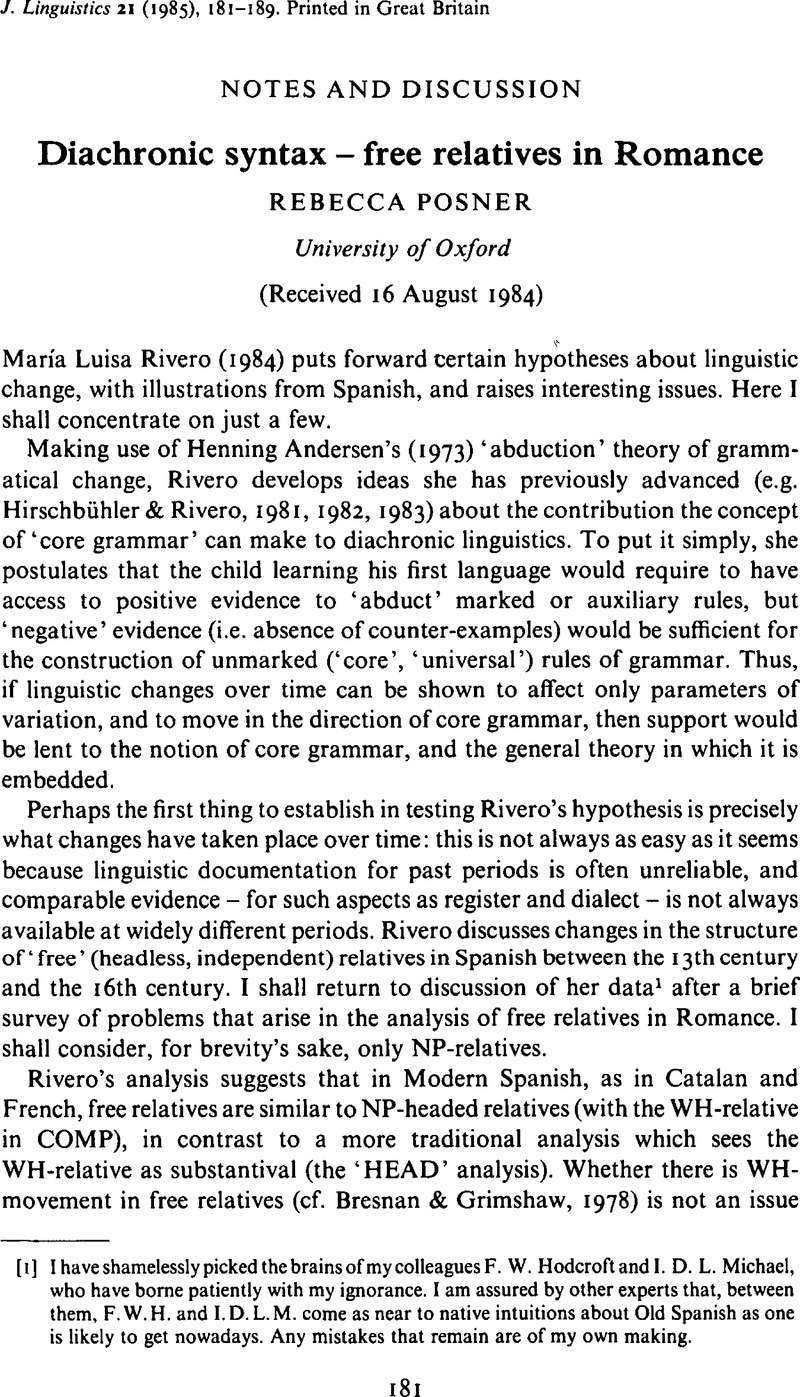Crossref Citations
This article has been cited by the following publications. This list is generated based on data provided by Crossref.
Rivero, María-Luisa
1986.
Dialects and diachronic syntax: free relatives in Old Spanish.
Journal of Linguistics,
Vol. 22,
Issue. 2,
p.
443.
van Riemsdijk, Henk
2006.
The Blackwell Companion to Syntax.
p.
338.
2006.
The Blackwell Companion to Syntax.
p.
439.
van Riemsdijk, Henk C.
2017.
The Wiley Blackwell Companion to Syntax, Second Edition.
p.
1.
Green, John N.
2018.
Romance Philology - With No Regrets † Rebecca Posner (17 August 1929-19 July 2018).
Romance Philology,
Vol. 72,
Issue. 2,
p.
147.
McLellan, Alina
2025.
Sak-relatives in Reunion Creole: examining the distinction between light-headed and free relatives.
Folia Linguistica,


